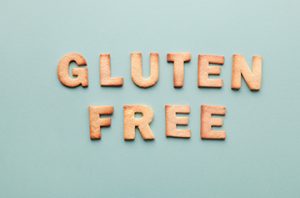 Have you considered going gluten-free or purchased items at the store that were gluten-free, thinking they must be healthier. Many clients at Next Level Fitness in Irvine, CA have told me they’ve done the same, but they aren’t sure what gluten is or why it’s healthier not to eat food that contains it. Gluten is a type of protein found in wheat, barley, rye and triticale, which is a cross between rye and wheat. There are a number of types of wheat such as semolina, spelt, wheatberries, durum, graham, farina and more, but it’s most prevalent in wheat, rye and barley.
Have you considered going gluten-free or purchased items at the store that were gluten-free, thinking they must be healthier. Many clients at Next Level Fitness in Irvine, CA have told me they’ve done the same, but they aren’t sure what gluten is or why it’s healthier not to eat food that contains it. Gluten is a type of protein found in wheat, barley, rye and triticale, which is a cross between rye and wheat. There are a number of types of wheat such as semolina, spelt, wheatberries, durum, graham, farina and more, but it’s most prevalent in wheat, rye and barley.
Gluten is beneficial for pizza makers and others.
Gluten makes food have a stretchy quality and holds things together, which is why pizza makers can stretch that ball and toss it in the air. It helps prevent to dough from ripping. There are two types of gluten in wheat. It does have health benefits if you aren’t gluten intolerant or have celiac disease. Since it’s in grain, avoiding it can increase the risk of heart disease, since it would reduce the consumption of whole grains, which can reduce the risk. Whole wheat also can also reduce the risk of stroke, type 2 diabetes and deaths from other causes. It can act like a prebiotic to feed good bacteria, particularly one bacteria, bifidobacteria.
There was a theory that today’s grain contains more gluten, but it’s not true.
While gluten levels have remained level in wheat, there are other reasons we see a rise in celiac disease and gluten intolerance. While gluten hasn’t increased, the structure of the protein gliadin has changed and that new structure triggers the gene that causes celiac. The new structure was completely absent in the 1960s,which may explain an increase more recently so 80% of the wheat used has the alteration. Gluten is in everything from soy sauce to beer and pasta. Even Play-doh contains gluten. Celiac disease wasn’t discovered until recently, approximately the 1970s. That’s when they discovered the gene HLA-DQ2 that’s associated with celiac disease and dermatitis herpetiformis, a skin rash resembling shingles that occurs from sensitivity to gluten. However, it’s been around since Biblical times, just not recognized.
Symptoms of gluten intolerance may be the same, but there’s a difference.
Both gluten intolerance and celiac may cause diarrhea, bloating, abdominal pain, constipation or all four. Those with celiac have extremely foul smelling excrement. Those with celiac disease also have other symptoms, such as unexplained exhaustion, headaches, skin blistering or other skin conditions, unexplained weight loss, iron deficiency, anxiety, auto-immune disorder, brain fog, joint pain, damage to the intestines, appendage numbness, or muscle pain. Celiac disease is an auto-immune disease and the damage can be permanent.
- Diabetics may suffer more from more celiac disease. While the average population may have a one in one hundred incidence of celiac disease, the number rises to one in ten for diabetics.
- If you have gluten intolerance, always read labels. It’s even in potato chips that contain malt vinegar or wheat starch. Some lipstick, lip-gloss or other cosmetics contain it, so do oral care products, communion wafers, nutritional supplements and over-the-counter medications or prescription drugs.
- Be aware that many “gluten-free” products are naturally gluten free, such as potatoes, rice, quinoa and oats that aren’t contaminated during processing. Other gluten-free products may have added salt, sugar or saturated fat to improve the flavor, texture or satisfaction of that product.
- It may be hard to get adequate fiber and nutrients if you go gluten-free. It also may lower the amount of B-vitamins, iron phosphorus, zinc and calcium in your diet. Those nutrients are often in foods with gluten.
For more information, contact us today at Next Level Fitness
